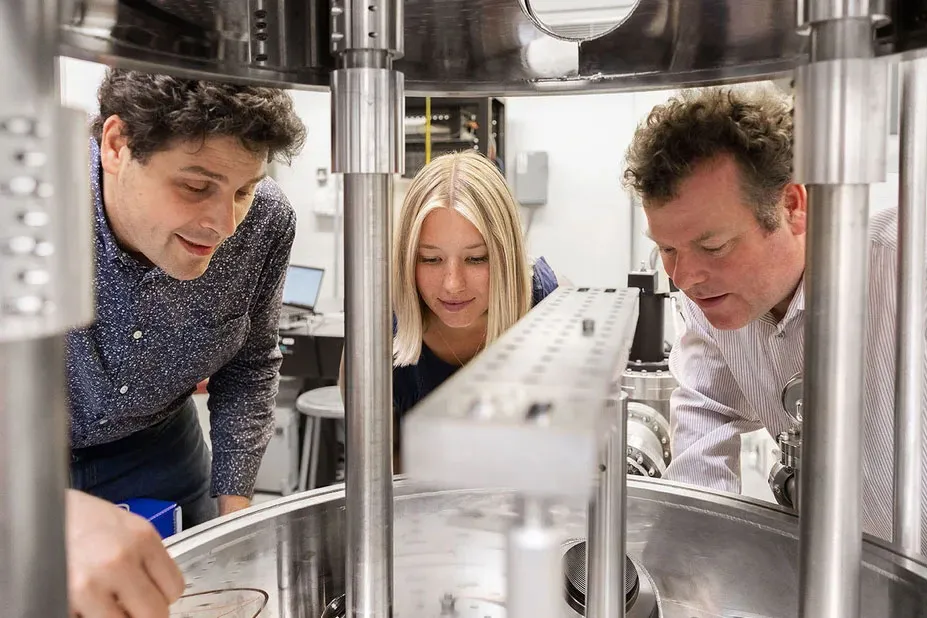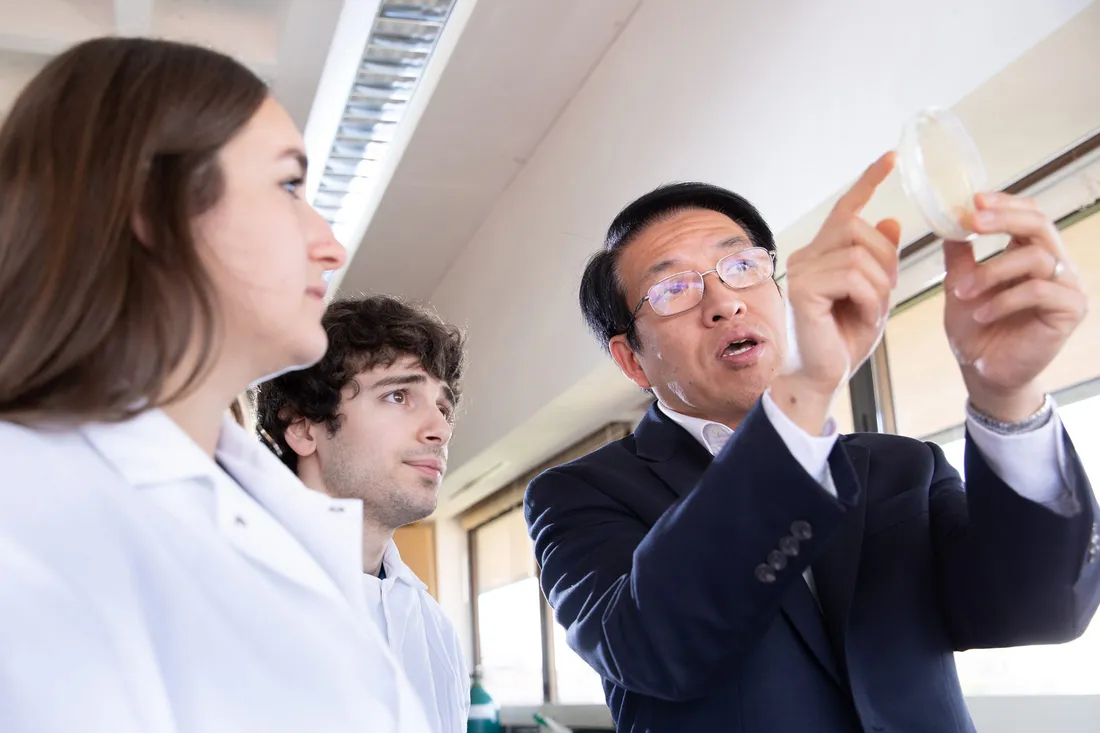
More than 120 people turned out for the inaugural BioInspired Institute Research Symposium at Syracuse University. Highlights included multiple poster presentations, where nearly 60 students shared results of their hands-on research. “BioInspired is committed to addressing real-world problems through health, medicine and materials innovation,” says Director M. Lisa Manning, whose institute partners with SUNY Upstate Medical University and the SUNY College of Environmental Science and Forestry. “These kinds of events champion discovery while fostering a sense of community.”
These kinds of events champion discovery while fostering a sense of community.

Crossing Boundaries
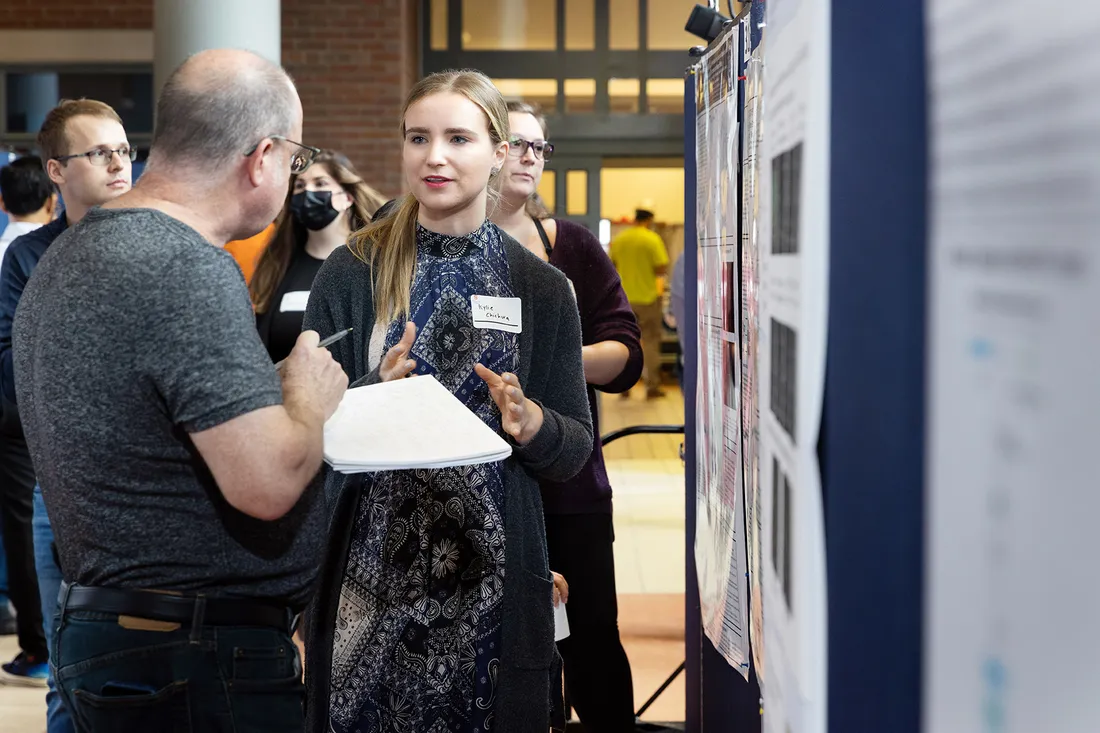
Kylie Chichura’s study of therapeutic strategies for obesity and Type 2 diabetes involves researchers at Seattle Children’s Hospital, the University of Washington, SUNY Upstate and the University of Pennsylvania. “I’m gaining invaluable experience,” says the chemistry doctoral student, whose work has won awards on both sides of the Atlantic.
Smart Solutions

“I want to shape the future of medicine,” says Paul Sagoe, a Ph.D. student in bioengineering, who designs drug delivery systems for the treatment of osteoarthritis. His approach utilizes “smart” therapeutic nanoparticles that can potentially ameliorate inflammation, reduce cartilage degradation and slow the progression of osteoarthritis.
Mentoring with a Mission

Professor Mary Beth Monroe (center) is flanked by Maryam Ramezani (left) and Nghia Thai, winners of the Best Overall Poster Award and Stevenson Biomaterials Award, respectively. Both Ph.D. students work in Monroe’s Biomaterials Lab, where they create synthetic, nonsurgical devices to treat infected wounds as well as damaged tissues and organs.
Matter of Importance

Nearly everyone in Manning’s lab presented a poster, including senior Erin McCarthy ’23. An aspiring medical researcher with an interest in soft matter, McCarthy says she admires Manning, who also is the William R. Kenan Jr. Professor of Physics. “Professor Manning gives me opportunities as an undergraduate that I wouldn’t get anywhere else,” says McCarthy, who works alongside members of the College of Arts and Sciences and College of Engineering and Computer Science.
Harnessing Potential
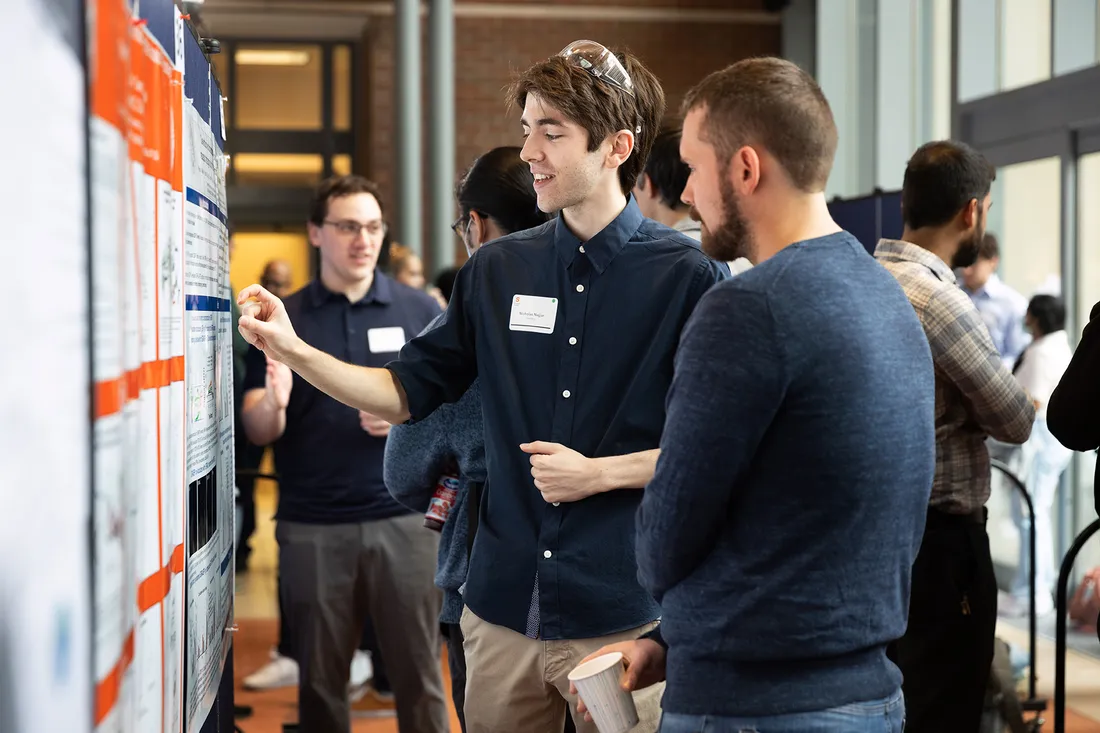
Chemistry Ph.D. student Nicholas Najjar ’21 (pointing) won the Best Commercialization Potential Award. Working with colleagues at Syracuse and the University of Pennsylvania, he’s developing a technology that inhibits the binding of a hormone responsible for chemotherapy-induced nausea, vomiting and anorexia.
Curbing Disease
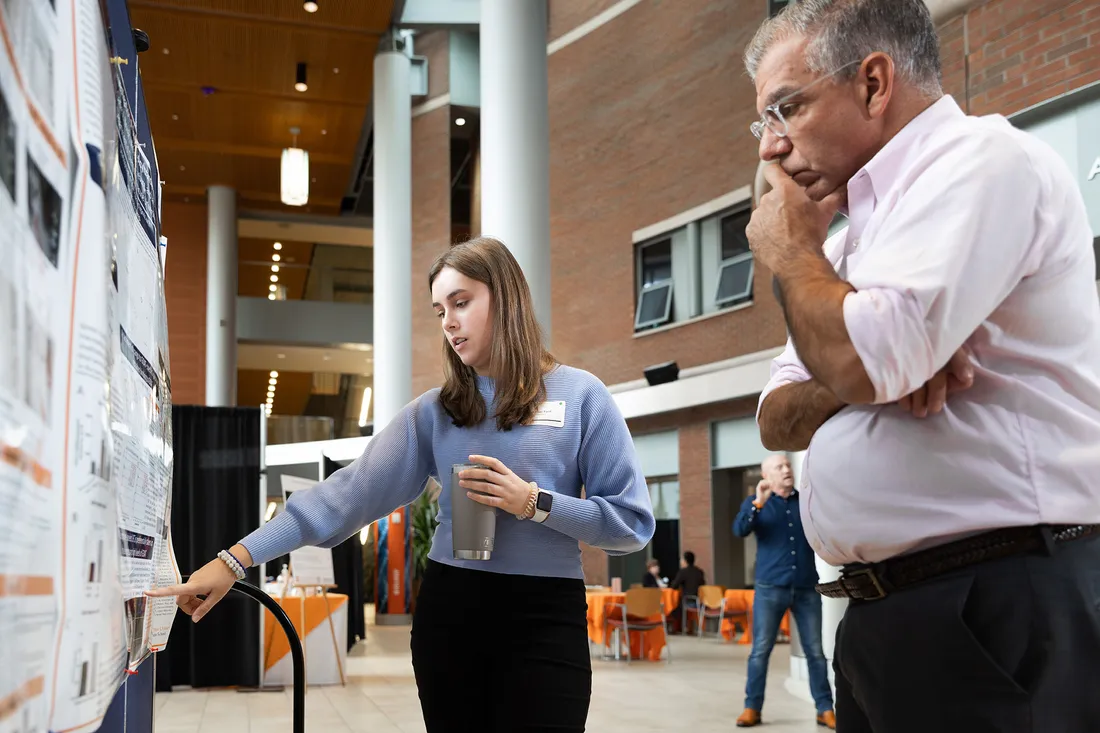
Prostate cancer is one of the most common cancers among U.S. men, annually claiming about 34,500 lives. Amber Ford, a Ph.D. student in chemistry, hopes that an enzyme called ghrelin-O-acyltransferase (GOAT) can serve as a “novel predictive biomarker” of the disease. “GOAT might also detect other diseases, like breast cancer,” says Ford, an Honorable Mention winner for Best Overall Poster.
Legacy of Learning
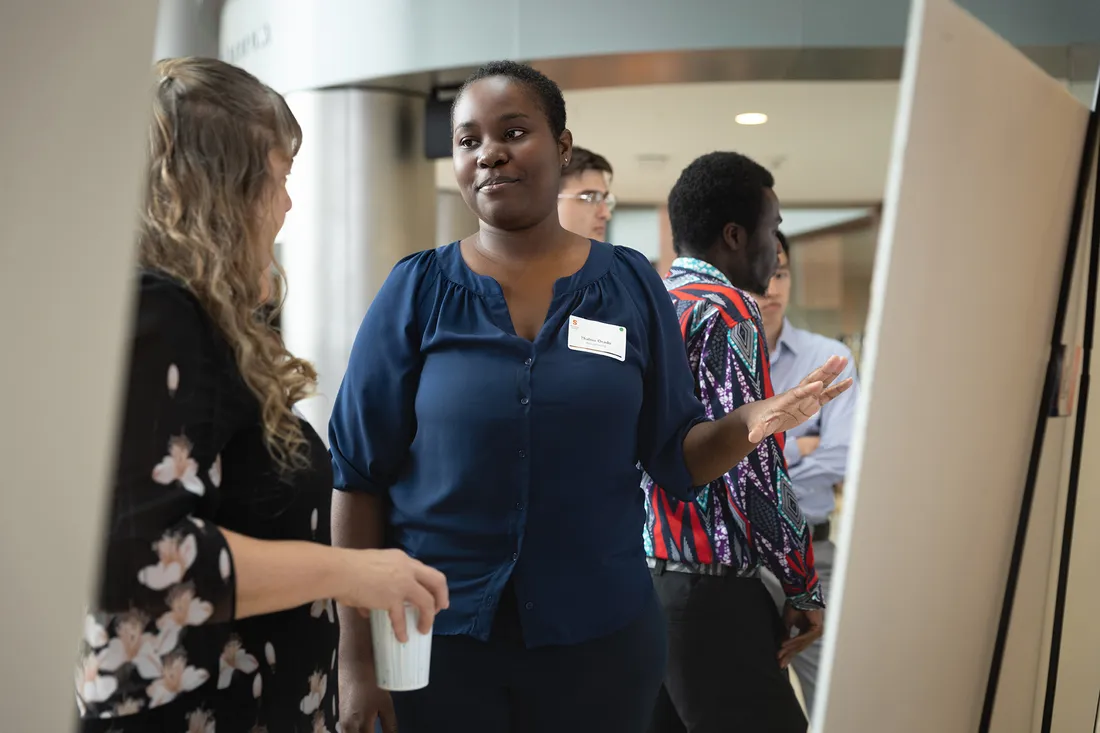
Thalma Orado’s family bleeds Orange, her mother having earned a Ph.D. in science education and her husband, a master’s degree in Pan African Studies. “I’ve always been interested in science,” says the Kenya-born doctoral student in bioengineering. Orado is developing a stimuli-responsive hydrogel for targeted drug delivery, designed to control pain and inflammation in osteoarthritic joints.
Engineering Excellence

Lauren Mayse (fourth from right), a Ph.D. student in physics and bioengineering, won the Second Place Overall Poster Award. Her work with genetically engineered proteins involves researchers from Syracuse and SUNY Upstate. Manning is also shown (far left).

